Breed Related Diseases: Shi Tzu
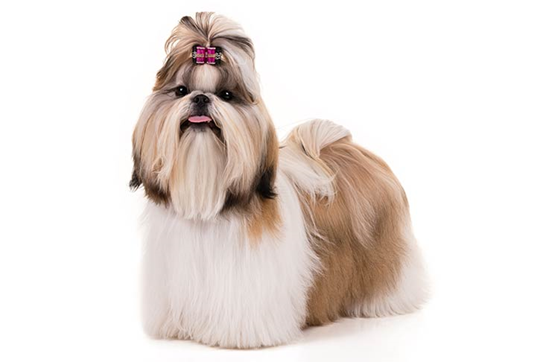
The Shi Tzu is a small dog- Toy Breed, known for its personality: lively and outgoing. Their traits of being sweet, playful, friendly, intelligent, and its appearance could win you over. However, this dog has the tendency to be aggressive, fearful, bark excessively, and difficult to train. Despite the expected characteristics of Shi Tzu, like all other breeds, temperament will vary. Known to have originated in China, the name Shi Tzu means “lion dog”, resembling lion as depicted in traditional oriental art. Generally, this dog lives in a long life span of 10 to 16 years, with an average height of 27 cm and average weight of 4.5-7.5 kg. Their coat comes in many colors, and the silky, long hair will need regular grooming. They may be sensitive to heat and need only moderate exercise, but they enjoy being with their family and they need attention. The small size makes it fragile and prone to injuries. Health problems of Shi Tzu exist, and it is important to have regular health check- ups with your vet. Skin Conditions and Allergies- Shi Tzu is sensitive to allergens. They may present itchiness, skin irritations and dermatitis when developed allergies. Skin Allergy is referred as “atopy”. It most commonly affects their feet, belly, folds of the skin, and ears. They could also be seen having hair loss. However, symptoms of allergies can also be caused by other skin conditions. Specific diets, regular preventives, and/ or medicated shampoos can be used to manage some allergies. It is important to prevent possible causes of allergies, however, dogs react differently to environments. Ear Infections- Also known as otitis externa. With floppy ears, Shi Tzu are susceptible to ear infections. You may notice your dog scratching at the ears and shaking their head. Presented signs also include redness of the inner ear, a dark discharge, a bad odor or general pain in their ear area. Ear infections can be triggered by allergies and too much moisture in the ear canal, or may be a result of other underlying diseases. Regular cleaning of your dog’s ear can help preventing ear infections. Breathing Problems- Due to their short, flat faces, Shih Tzus are susceptible to respiratory and breathing problems. They have narrow upper airways and small and delicate tracheas, making it hard for them to breathe. You may notice your dog having shallow and difficulty in breathing, excessive panting, trouble eating, snoring, and coughing. In extreme cases, collapsing and passing out are possible. Over-exercising should be avoided, and walking them in either early morning or late evening with cooler air is recommended. Brachycephalic Obstructive Airway Syndrome (BOAS) is a respiratory issue which can cause problems in regulating their body temperature. This can also lead to secondary issues caused by increased demands on their heart and lungs. Eye Problems- Their large, dark eyes make them particularly prone to eye problems. They can inherit or develop eye conditions and are more susceptible to eye injuries due to the naturally protruding eyeballs. Most common injuries are resulting from corneal scrapes and punctures. Hip Dysplasia- It is a condition of abnormally developed hip joints with different severities. This is common and painful genetic problem. It is important to see the dog’s hip health to avoid being bred. Hypothyroidism- It is a hormonal disease affecting their thyroid gland, resulting to lack of thyroxine, which controls metabolism. This disease may cause hair loss, dull and thin coat, blackened areas of skin, lethargy, less keen to exercise and weight gain. Hyperadrenocorticism (Cushing’s )- Although this condition may develop slowly, it is common to Shi Tzu. This disease is a result of malfunctioning adrenal glands, with excessive production of Adrenocorticotropic Hormone (ACTH), affecting their metabolism and inflammatory and immune responses. Symptoms displayed include frequent drinking and urinating, increased appetite and reduced activity level, potbelly, thin skin, and hair loss. References: Shih Tzu The Shih Tzu is a small dog – one of the Toy breeds. He is generally described as lively and outgoing and despite his size requires plenty of exercise. He makes a delightful companion and family dog but as with all breeds temperament will vary. His coat will become very long unless trimmed and will … Continue readingShih Tzu Dog Breed Health
Breed- Related Diseases: Boxer
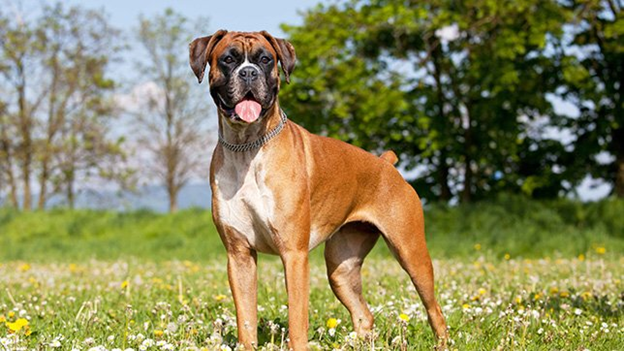
The Boxer breed was originally used to hunt large game and in fighting or baiting. However, the Boxers today are more refined and elegant than their ancestors, but they are still strong, smart, and fearless. This breed has smooth coat. With its medium size, it has square build and strong bone, with stretched muscles and strongly developed and molded appearance. The Boxers are a friendly and high-spirited breed, who are patient and gentle with children. They are fun, can play willingly, and are of high-energy dogs. They enjoy close human contact and is known as one of most popular dogs in America. However, this dog can be rowdy, gassy and drool a lot, attention- seeker which may exhibit signs of separation anxiety if left alone too much, and could be suspicious of strangers. On the other hand, like other dog breeds, Boxers can suffer from several health issues. Some of them can be treated if diagnosed early enough, and thus visiting your veterinarian to perform yearly tests and talk over health issues of your companion is important. Cancer– It is the most common health issue with this breed. It can be brain, thyroid, mammary glands, testes, heart, spleen, blood, lymph system (lymphoma), and other organs. Catching this early greatly increases the odds of survival, thus owners should keep an eye out for early symptoms. White Boxers, and colored Boxers with white markings are vulnerable to develop skin cancer from sunburns. Cardiomyopathy– This condition affects the heart muscle tissue which may result in episodes of weakness, fainting and sudden cardiac death, while some patients can develop congestive heart failure. This shows an irregular heartbeat. Aortic stenosis– A condition wherein there is a narrowing of the valve through which blood leaves the heart, usually caused by a fibrous ring of tissue. This may lead to progressive damage to the chamber that pumps the blood out of the heart, making the organ work harder to do its job. Regular health checks can help your vet detect the presence of this condition. A veterinary cardiologist can typically diagnose this condition after a heart murmur has been detected. Breeding dogs with this condition should be avoided. Bone and Joint Problems– These include hip dysplasia, cranial cruciate ligament ruptures (in the knee joints) and degenerative myelopathy (a progressive disease affecting the spine). Each condition can be diagnosed and treated to prevent undue pain and suffering. In the preventive healthcare of musculoskeletal disorders, keeping the right weight, providing high-quality diet, and avoiding and avoid excessive work on the knees (like playing Frisbee) are key in avoiding this painful injury. Also, joint supplements can be provided. Gastric Dilatation Volvulus (GDV) or Bloat or Torsion– This life- threatening condition occurs when air, fluid, food or foam collects in the stomach and making it expand, with or without twisting of the stomach. Whereas, stomach twisting can trap contents which leads to restricted blood flow to organs such as heart and stomach. Bloat may be suspected if your Boxer started to show swollen upper abdomen, signs of anxiety or agitation, retching but unable to vomit, excessive drooling or panting, and may be restless, depressed, lethargic, and weak with a rapid heart rate. Degenerative Myelopathy (DM)– It is a neurological disease reported in Boxers after middle age, and despite being not common, the Boxer is among the top 3 breeds to develop this. It affects the spinal column and nerves that coordinate the movement of the rear legs. This leads to paralysis, then progresses to front legs. Affected Boxers eventually lose their ability to walk, incontinent and are euthanized. This is a progressive, incurable disease of the spinal cord. Despite not being painful, it is quite serious. Allergies– Watch out for itchy, scaly skin, the breed Boxers are prone to allergies, both environmental allergies and food-related allergies. It is important to provide a proper diet and exercise routine to your Boxer. Keeping an appropriate weight is the easiest way to improve his health and extend his life. Building a routine care will help your Boxer live longer, stay healthier, and be happier during her lifetime. Any abnormal symptom could be a sign of serious disease, know when to seek veterinary help, and how urgently. References: https://animalhealthcenternh.com/client-resources/breed-info/boxer/ http://www.vetstreet.com/dogs/boxer#health https://www.animalfriends.co.uk/dog/dog-advice/dog-breed-health-problems/boxer-health-problems/ https://www.usboxer.org/health-issues http://www.allboxerinfo.com/boxer-dog-health-problems https://pavg.net/news/common-diseases-in-boxers/
Breed- Related Diseases: Alaskan Malamute
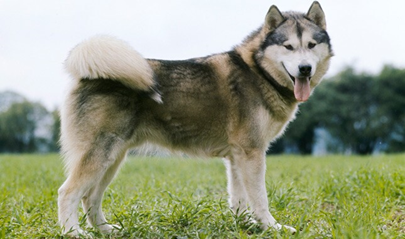
Standing at 23 to 25 inches at the shoulder, with weights of 75 to 85 pounds, Alaskan Malamutes are immensely strong, heavy-duty worker of spitz type. Originally bred to pull sleds in harsh terrain and brutal climates, these very solid dogs are however popular due to their looks and individual personalities. Often mistaken for Huskies, the Malamutes are larger and known for being affectionate, loyal, and playful. They are recognizable by th e well-furred plumed tail carried over the back, erect ears, and substantial bone. With the fact that the Alaskan Malamute is a big, powerful dog, they are also expert diggers and climbers- which makes keeping them behind the fence extremely difficult. Keeping them in the backyard isn’t a great idea unless you like holes the size of a swimming pool, and your neighbors like howling. It will not be a surprise to not find your malamute when you get home, since he considers fences to be interesting challenges rather than genuine obstacles. However, the destructiveness of your Malamute can be prevented with lots of exercises. Taking them to hiking, pulling sleds in winter and carts in summer, competitive weight pulling and formal obedience are can be good for his brain and his brawn. The Malamutes are also smart and curious. Mals don’t bark a lot, but they are very vocal and has the tendency to howl. They love to run, pull, and roam. Despite being sociable towards people, it can be aggressive toward strange dogs or animals. Training from a young age is recommended. Despite being relatively healthy breed with an average lifespan of 12 years, they can suffer from some common conditions like hip dysplasia, hypothyroidism, and bloat. This breed is also susceptible to bacterial and viral infections, such as parvo, rabies, and distemper, but many of these infections are preventable through vaccination. Relative to their breed, Malamutes can develop some health conditions to include: Hip dysplasia – A condition where hip joint doesn’t fit together perfectly, which will eventually lead to arthritis. This is a particularly devastating condition for an active running dog like the Malamute; and it requires costly surgery to correct. Before breeding, dogs should be screened by x-rays through the BVA/Kennel Club Hip Dysplasia Scheme. Hypothyroidism – This is due to an underactive thyroid, causing problems with weight, skin and energy levels. Chondrodysplasia – This is a form of dwarfism where cartilage and bone develop incorrectly. The puppies can be screened by x-ray between 5-12 weeks of age. Idiopathic polyneuropathy – This genetic disorder affects the dog’s nerves which causes chronic lack of coordination and weakness in the dogs. Before breeding, dogs should be screened by blood test to make sure they are not carriers. Day blindness (also known as haemeralopia or cone degeneration) – This is the sensitivity to bright light which affects their vision. Before breeding, dogs should be screened by blood test to make sure they are not carriers. Cataracts – These are a common cause of blindness in older Malamutes. There is a ‘clouding’ of the lens of the eye affecting vision. Surgery may be an option to remove cataracts and restore sight. Breeding dogs should be screened every year. Bloat– The Gastric Dilatation and Volvulus, also known as GDV or Bloat, usually occurs in dogs with deep, narrow chests, making Malamutes more at risk than other breeds. This condition results to stomach twisting- which cuts off blood supply to the stomach, and sometimes the spleen; and thus a quickly fatal disease, sometimes in as little as 30 minutes, if left untreated. Retching or heaving, acting restlessly, laying with front feet down, rear end up, and having enlarged abdomen can be observed. Take your pet to an emergency hospital immediately once symptoms are noticed. As a puppy, remember to socialize your Mal with lots of other dogs, different people and types of experiences. Taking your Mal, whether a puppy or adult, to a veterinarian soon after adoption is highly recommended to spot visible problems, and also to set up a preventive regimen that will help you avoid many health issues. References: https://www.pdsa.org.uk/pet-help-and-advice/looking-after-your-pet/puppies-dogs/large-dogs/alaskan-malamute https://www.yourpurebredpuppy.com/health/alaskanmalamutes.html https://animalhealthcenternh.com/client-resources/breed-info/alaskan-malamute/ https://www.akc.org/dog-breeds/alaskan-malamute/ https://vcahospitals.com/know-your-pet/dog-breeds/alaskan-malamute https://www.embracepetinsurance.com/dog-breeds/alaskan-malamute
Breed Related Diseases: Pug
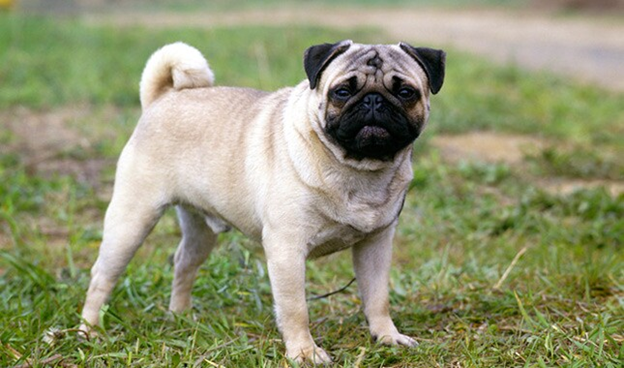
Originating from China, the Pugs were valued by emperors and used to live in luxurious accommodations. In various eras and places, the Pugs were called in different names: Lo-sze (China), Mopsi (Finland), Doguillo (Spain); to name a few. Coming from the Latin word “pugnus,” meaning “fist”, it has been suggested due to the resemblance of the dog’s face to a clenched fist. Pugs are usually at 14 to 18 pounds, both male and female, in weight, and generally at 10 to 14 inches tall at the shoulder. They are square and cobby, with short legs and long body, compactness of form, well- knit proportions, and hardness of developed muscle. They are desirable with large, massive, and round heads. The dark, large, bold, and prominent eyes are globular in shape and shows solicitous expression. The pugs have large and deep wrinkles, with short, blunt, square muzzle. The coat of a pug is fine, smooth, soft, short and glossy, with colors fawn or black. Being bred for centuries, they are lovable dogs. Hunting, guarding, or retrieving are not what they do best, instead, as companions- craving affection and happier when spending time with family. They are known for being an even-tempered breed, with exhibiting stability, playfulness, great charm, dignity, and an outgoing, loving disposition. The pugs usually goes along well with other dogs, cats, and children. Although they are not designed to be jogging companions or beach bunnies, their relatively large size (for a toy breed) and easy-going temperament makes them a perfect on- the- go family companion. Generally, the pugs are healthy, but all dogs have the potential to develop genetic health problems; and it’s important to be aware of the following diseases. Cheyletiella Dermatitis (Walking Dandruff): A skin condition that is caused by a small mite. This may be contagious to other household pets. It is characterized by heavy dandruff, especially down the middle of the back, and needs the veterinarian’s check- up. Pug Dog Encephalitis: This is a unique fatal inflammatory brain disease to Pugs. Due to unknown causes of the disease, there is no known treatment, and diagnosis is only conducted by testing the brain tissue of the dog after it dies. Usually affecting younger dogs, it causes them seizure, blindness, then fall into a coma and die in a few days or weeks. Epilepsy: The Pugs are prone to idiopathic epilepsy: and with seizures for no known reason. Taking the Pug to the vet determines what treatment is appropriate. Nerve Degeneration: Older Pugs that drag their rear, stagger, have trouble jumping up or down, or become incontinent may be suffering from nerve degeneration. The condition usually advances slowly- and the cause is also unknown. Corneal Ulcers: Due to the large and prominent eyes of the Pug’s eyes, these are prone to injuries or development of ulcers on the cornea (the clear part of the eye). If your Pug squints or the eyes look red and tear excessively, contact your vet immediately. Corneal ulcers usually respond well to medication, but if left untreated, can cause blindness or even rupture the eye. Dry Eye: Keratoconjunctivitis sicca and pigmentary keratitis are two conditions seen in Pugs. They can occur at the same time, or individually. Dry eye is caused by insufficient tears to stay moist. Your vet can perform tests to determine if this is the cause, which can be controlled with medication and special care. Whereas, Pigmentary keratitis causes black spots on the cornea, especially in the corner near the nose. The pigment can cause blindness if it covers the eyes. Your vet can prescribe medication that will help keep the eyes moist and dissolve the pigment. Both of these eye conditions require life-long therapy and care. Eye Problems: Pugs are prone to a variety of eye problems, including proptosis (the eyeball is dislodged from the eye socket and the eyelid clamps behind it); distichiasis (an abnormal growth of eyelashes on the margin of the eye, resulting in the eyelashes rubbing against the eye); progressive retinal atrophy (a degenerative disease of the retinal visual cells that leads to blindness); and entropion (the eyelid, usually the lower lid, rolls inward, causing the hair on the lid to rub on the eye and irritate it). Allergies: Some Pugs suffer from a variety of allergies, ranging from contact to food allergies. Demodectic Mange: Also called demodicosis, all dogs carry a little passenger called a demodex mite. The mother dog passes this mite to her pups in their first few days of life. The mite can’t be passed to humans or other dogs; only the mother passes mites to her pups. The dog develops patchy skin, bald spots, and skin infections all over the body. Staph Infection: Staph bacteria is commonly found on skin, but some dogs will develop pimples and infected hair follicles if their immune systems are stressed. The lesions can look like hives where there is hair; on areas without hair, the lesions can look like ringworm. Your vet will provide appropriate treatment. Yeast Infection: This is suspected if your Pug started smelling bad, it feels itchy and has blackened, thickened skin. It commonly affects the armpits, feet, groin, neck, and inside the ears. Your vet can prescribe medications to clear this up. Hemi-vertebrae: Short-nosed breeds, such as Pugs, Bulldogs and French Bulldogs, can have misshaped vertebrae. Others will stagger and display an uncoordinated, weak gait between 4 and 6 months of age, while some dogs get progressively worse and may even become paralyzed. The cause of the condition is unknown. Surgery can help. Hip Dysplasia: Many factors, including genetics, environment and diet, are thought to contribute to this deformity of the hip joint. Affected Pugs are usually able to lead normal, healthy lives with proper veterinary attention. Legg-Perthes Disease: It also involves the hip joint. Affected pugs develop insufficiency of blood supply to the head of the femur (the large rear leg bone), and the head of the femur that connects to the
Breed-related disease: Bichon Frise
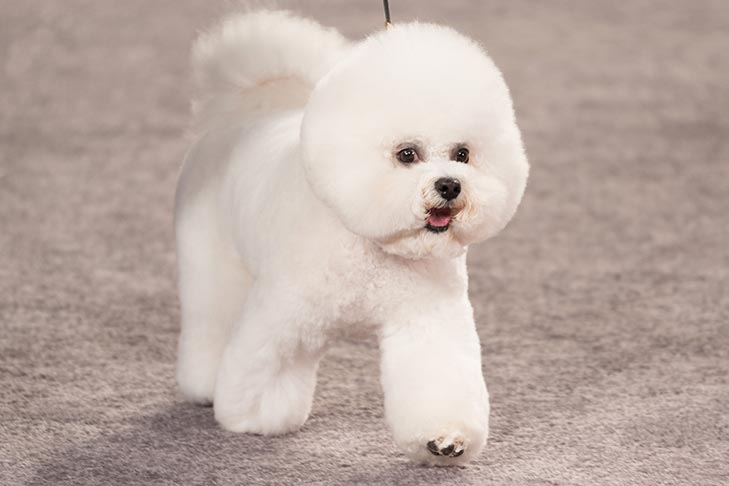
The Bichon Frise is often depicted as a French dog. Although the Bichon breed type are originally Spanish, used as sailing dogs, also as herding dogs sometimes, the French developed them into a gentle lap-dog variety. The Bichon type arose from the water dogs, and is descended from the poodle-type dogs and either the Barbet or one of the water spaniel class of breeds. Modern Bichons have developed into four categories: the Bichon Frise or Tenerife, the Maltese, the Bolognese, and the Havanese. These are often treated as separate breeds. A good-size Bichon will stand a shade under a foot tall at the shoulder. The breed’s glory is a white hypoallergenic coat, plush and velvety to the touch, featuring rounded head hair that sets off the large, dark eyes and black leathers of the nose and lips. With its happy-go-lucky attitude, the playful, vivacious, and bouncy Bichon dog delights everyone. It is good with kids and amicable towards pets, other dogs, and strangers. This affectionate, responsive, and sensitive dog also loves to play and be cuddled, but when it is left alone, it may bark excessively. The Bichon dog breed, with a lifespan of about 12 to 15 years, is prone to some serious health problems like: Heart Disease: Bichons are prone to multiple types of heart disease, which can occur both early and later in life. Liver Problems: Your Bichon is more likely than other dogs to have a liver disorder called portosystemic shunt (PSS). Some of the blood supply that should go to the liver goes around it instead, depriving the liver of the blood flow it needs to grow and function properly. If your friend has PSS, his liver cannot remove toxins from his bloodstream effectively. Hip Dysplasia Hip dysplasia is a hereditary condition that prevents the thigh bone from adjusting perfectly to the hip joint. Hip dysplasia is common among Bichon Frise, but it does not affect them all. The dog usually has symptoms of pain and lameness. However, hip dysplasia does not always cause discomfort in the Bichon Frise, but it can develop into arthritis as your dog ages. Incontinence Incontinence can affect your Bichon Frise at any age. If your dog has been previously housetrained, it is important to remember that loss of bladder or bowel control is a physical problem, not a behavioral one. Incontinence is most commonly found in older Bichon Frises, especially females. Source: https://en.wikipedia.org/wiki/Bichon_Frise Photo credit: https://en.wikipedia.org/wiki/Bichon_Frise
Breed-related disease: Japanese Bobtail
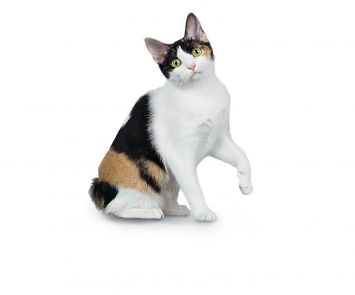
The Japanese Bobtail is a breed of domestic cat with an unusual bobtail more closely resembling the tail of a rabbit than that of other cats. The variety is native to Japan and Southeast Asia, though it is now found throughout the world. The breed has been known in Japan for centuries, and it frequently appears in traditional folklore and art. Japanese bobtails have two coat types: long and short. The coat can be solid, bi-color, calico, or tabby, but this breed is most commonly white with colored spots, or what some call the van pattern. Both long and short coats are silky smooth, easy to groom, and low-shedding. However, although Japanese bobtails usually shed less than other breeds, they do have shedding seasons in the spring and fall and are not considered hypoallergenic. The Japanese Bobtail is active and intelligent. It’s not unusual to find him splashing his paw in water, carrying toys around, or playing fetch. He is highly curious and loves to explore. Japanese Bobtails are talkative, communicating with a wide range of chirps and meows. Their voices are described as almost songlike. These are outgoing cats who get along well with children and other pets, including dogs, and adjust to travel with ease. They love people and are often seen riding on a shoulder so they can supervise everything going on. We know that because you care so much about your cat, you want to take great care of her. That is why we have summarized the health concerns we will be discussing with you over the life of your Japanese bobtail. Dental Disease: Dental disease is one of the most common chronic problems in pets who don’t have their teeth brushed regularly. Unfortunately, most cats don’t take very good care of their own teeth, and this probably includes your Japanese bobtail. Without extra help and care from you, your cat is likely to develop potentially serious dental problems. Dental disease starts with food residue, which hardens into tartar that builds up on the visible parts of the teeth, and eventually leads to infection of the gums and tooth roots. Protecting your cat against dental disease from the start by removing food residue regularly may help prevent or delay the need for advanced treatment of dental disease. Heart Disease: Cardiomyopathy is the medical term for heart muscle disease, either a primary inherited condition or secondary to other diseases that damage the heart. The most common form, called hypertrophic cardiomyopathy, or HCM, is a thickening of the heart muscle often caused by an overactive thyroid gland. Another example is dilated cardiomyopathy, or DCM, which can be caused by a dietary deficiency of the amino acid taurine. While DCM was a big problem in the past, all major cat food producers now add taurine to cat food, so DCM is rarely seen in cats with high-quality diets today. FLUTD: When your cat urinates outside the litter box, you may be annoyed or furious, especially if your best pair of shoes was the location chosen for the act. But don’t get mad too quickly—in the majority of cases, cats who urinate around the house are sending signals for help. Although true urinary incontinence, the inability to control the bladder muscles, is rare in cats and is usually due to improper nerve function from a spinal defect, most of the time, a cat that is urinating in “naughty” locations is having a problem and is trying to get you to notice. What was once considered to be one urinary syndrome has turned out to be several over years of research, but current terminology gathers these different diseases together under the label of Feline Lower Urinary Tract Diseases, or FLUTD. Renal Failure: Renal failure refers to the inability of the kidneys to properly perform their functions of cleansing waste from the blood and regulating hydration. Kidney disease is extremely common in older cats, but is usually due to exposure to toxins or genetic causes in young cats. Even very young kittens can have renal failure if they have inherited kidney defects, so we recommend screening for kidney problems early, before any anesthesia or surgery, and then regularly throughout life. Severe renal failure is a progressive, fatal disease, but special diets and medications can help cats with kidney disease live longer, fuller lives. Source: https://www.cbvetclinic.com/client-resources/breed-info/japanese-bobtail-longhair/ https://www.cat-lovers-only.com/japanese-bobtail.html Photo crédit: https://www.petfinder.com/cat-breeds/japanese-bobtail/
Breed-related disease: Airedale Terrier
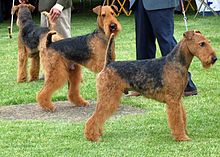
John K. Rosembert The Airedale Terrier also called Bingley Terrier and Waterside Terrier, is a dog breed of the terrier type that originated in the valley (dale) of the River Aire, in the West Riding of Yorkshire, England. It is traditionally called the “King of Terriers” because it is the largest of the terrier breeds. The Airedale was bred from the Old English Black and Tan Terrier (now known as the Welsh Terrier), the Otterhound and probably some other Terrier breeds, and has contributed to other dog breeds, such as the Yorkshire Terrier. Originally bred to serve as a versatile hunting and all around working farm dog, in Britain this breed has also been used as a war dog, guide dog and police dog. In the United States, this breed has been used to hunt big game, upland birds, and water fowl, and serve in many other working capacities. The Airedale Terrier is known as the “king of terriers” partly for his size. They range in height about 23 inches and in weight from 45 pounds for a small female, to 70 pounds for a large male (20 to 32 kilograms).the breed has a classic terrier head with virtually no stop (forehead), v-shaped ears tipped over and a straight back with an erect docked tail. The outline is quite square and these dogs are sturdy. Coloring for the Airedale is black and tan, with a classic terrier coat of dense, harsh hair with a softer undercoat. A grown out coat will look almost curly. The coat and color stay sharpest with hand stripping of the dead hair. Pet Airedales that are clipped may appear gray and tan. This protective and lively companion is one of the most versatile terriers. The playful, adventurous, and bold Airedale is intelligent, and yet headstrong and stubborn at times. Though some dogs are dominating, most of them are responsive to the wishes of the owner and are reliable. As long as the Airedale is provided with daily physical and mental exercise, it is a well-behaved house dog. It likes to be a leader and dislikes being challenged by other dogs. Smaller dogs and terriers, however, get along well. We know you care so much for your dog welfare, below we summarize some of the most common problem of the terrier dog Eye Problems Not many things have as dramatic an impact on your dog’s quality of life as the proper functioning of his eyes. Unfortunately, Airedale Terriers can inherit or develop a number of different eye conditions, some of which may cause blindness if not treated right away, and most of which can be extremely painful! We will evaluate his eyes at every examination to look for any signs of concern. Hip dysplasia Hip dysplasia is one of the most commonly found osteopathic conditions in pedigree dog breeds, and the Airedale is one of the breeds that is known to be affected by it to some degree. Hip dysplasia has a genetic element to it, and is caused by a malformation of the hip joint in development, which usually manifests in dogs before they reach the age of two years old. Dermatitis Airedales can be prone to a range of skin conditions, particularly dermatitis, which is common across all of the terrier breeds. The coat and skin of Airedales should be checked over regularly, as problems often go unnoticed due to the density of their coats. Acral lick granulomas may develop if sore spots and itching lead to the dog obsessively licking their skin to the point that it breaks, and acute moist dermatitis, which leads to itchy, weeping skin in patches can also affect the breed. A range of other dermatological conditions may manifest too, including allergies, particularly food allergies, or problems with the thyroid gland which manifest as skin conditions. Cerebellar ataxia Cerebellar ataxia is a hereditary brain condition that is caused by a recessive gene, and usually becomes symptomatic in puppies of between six and twelve weeks old. The condition leads to a range of obvious symptoms and problems, including poor balance and rapid eye movement, as well as problems with focusing. Source: https://www.petmd.com/dog/breeds/c_dg_airedale_terrier \ https://animalhealthcenternh.com/client-resources/breed-info/airedale-terrier Photo credit: https://en.wikipedia.org/wiki/Airedale_Terrier#/media/File:Airedale_Terriers_Flickr.jpg
Breed-related disease: Norwegian Forest Cat
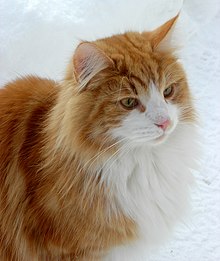
John K. Rosembert The Norwegian Forest cat is a breed of domestic cat originating in Northern Europe. It is a big, strong cat, similar to the Maine Coon breed, with long legs, bushy tail, and sturdy body. The breed is very good at climbing, since they have strong claws they are one of the few domestic cats capable of descending a tree head first With their thick coat of warm, water-resistant fur, the Norwegian Forest Cat is a truly rugged cat. In fact, most experts agree that its ancestors belonged to the Vikings and were used to catch and control vermin on Viking ships. It is also one of the oldest breeds: its ancestors were brought to Norway by Vikings over a thousand years ago and interbred with longhaired cats imported to Norway by Crusaders. True to its name, the Norwegian Forest Cat is built to survive Norway’s cold and snow! Over the centuries, the Norwegian Forest Cat walked Norwegian forests and farms, honing their hunting skills. In 1938, the first Norwegian Forest Cat club was formed to preserve the breed. However, crossbreeding during WWII almost led to the breed’s extinction. Luckily, another official breeding program saved the breed, which didn’t leave Norway until the 1970s. He might have the words “forest cat” in his name, but the Norwegian Forest cat is far from feral. He loves people, in a low-key, cool Norwegian kind of way. He won’t harass you for attention, unless his meals are late but he will follow you around and hang out wherever you are. Their temperament can make him a good choice for families with children and other pets, especially if he has been raised with them. Just make sure children treat him with the gentle respect he deserves. He has an average activity level, not a couch potato but not super-active, either. Below we summarized some of the most common health issues of Norwegian Forest Cat breed in order to help you prevent some predictable risks in your pet. Hypertrophic Cardiomyopathy is the most common heart problem diagnosed in cats. Symptoms include laboured or rapid breathing and lethargy. Although there’s no cure, quality of life can be improved greatly by treatment to control the heart rate and reduce lung congestion. Pyruvate Kinase (PK) is an enzyme deficiency that damages a cat’s red blood cells. The Norwegian Forest is one of the breeds that seems to be more predisposed to it than others. Early signs include anaemia, increased heart rate, muscle wastage and lethargy. Diagnosis involves a full biochemistry profile. Sadly, a bone marrow transplant is the only treatment. Polycystic Kidney Disease can affect Norwegian Forest cats. It’s where lots of fluid-filled cysts develop in the kidneys, leading ultimately to kidney failure. Many cats affected by it won’t display symptoms until middle-age or older and although it’s not curable, supportive treatment can help to minimize the impact for as long as possible. Retinal Dysplasia can affect this breed. Often, this is limited to tiny blind spots over the retina that don’t need to be treated. However, if the dysplasia covers a large area, there’s a greater chance of secondary problems such as cataracts or retinal detachment that will require treatment. Hip Dysplasia is usually an inherited disease that can affect Forest cats. Treatment depends on severity, and in serious cases can involve orthopedic referral and hip surgery. Sources: https://www.everypaw.com/all-things-pet/norwegian-forest-cat-breed-info-health-advice http://www.vetstreet.com/cats/norwegian-forest-cat#personality Photo credit: http://www.vetstreet.com/cats/norwegian-forest-cat#personality https://en.wikipedia.org/wiki/Norwegian_Forest_cat#/media/File:Norwegian_Forest_Cat_in_snow_(closeup)_(cropped).jpg
Breed-related disease: Border Collie
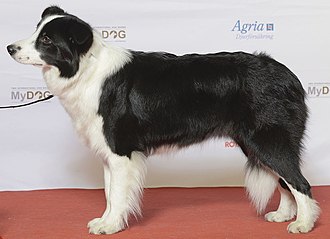
The classic working farm dog, the Border Collie originated in the border country between Scotland and England. Farmers bred their own individual varieties of sheepdogs for the hilly area. As Borders often tended their flock alone, they had to think independently and be able to run around 50 miles a day in hilly country. Considered highly intelligent, extremely energetic, acrobatic and athletic, they frequently compete with great success in sheepdog trials and dog sports. They are often cited as the most intelligent of all domestic dogs. Border Collies continue to be employed in their traditional work of herding livestock throughout the world and are kept as pets. Border collies are active, working dogs best suited to country living. If confined without activity and company, these dogs can become unhappy and destructive. The breed is highly intelligent, learns quickly and responds well to praise. Border collies are extremely energetic dogs and must have the opportunity to get lots of exercise. They love to run. They also need ample attention from their owners and a job to do, whether that be herding livestock or fetching a ball. They should be socialized well from the time they are young to prevent shyness around strangers, and they should have obedience training, which can help deter nipping behavior and a tendency to run off or chase cars. Below we resume some important diseases more common in your Border Collie. Dental Disease Dental disease is the most common chronic problem in pets affecting 80% of all dogs by age two. Unfortunately, your Border Collie is more likely than other dogs to have problems with her teeth. Dental disease starts with tartar build-up on the teeth and progresses to infection of the gums and roots of the teeth. If we don’t prevent or treat dental disease, your buddy may lose her teeth and be in danger of damaging her kidneys, liver, heart, and joints. In fact, your Border Collie’s life span may even be cut short by one to three years! Cancer Cancer is a leading cause of death in older dogs. Your Collie will likely live longer than many other breeds and therefore is more prone to get cancer in his golden years. Many cancers are curable by surgical removal, and some types are treatable with chemotherapy. Early detection is critical! Multidrug Resistance Multidrug resistance is a genetic defect in a gene called MDR1. If your Border Collie has this mutation, it can affect the way his body processes different drugs, including substances commonly used to treat parasites, diarrhea, and even cancer. For years, veterinarians simply avoided using ivermectin in herding breeds, but now there is a DNA test that can specifically identify dogs who are at risk for side effects from certain medications. Testing your pet early in life can prevent drug-related toxicity. Neurological disorders Although the Border Collie is generally a breed noted for its vitality, they are unfortunately prone to canine epilepsy, a neurological disorder that is the result of an irregular neuroelectric activity. Signs of idiopathic epilepsy include seizures in the form of spasms, twitching, convulsions, and in extreme cases, a loss of consciousness. Idiopathic epilepsy is the most common form of the disease seen in Border Collies. A hereditary condition, IE is usually observed between 6 months and 5 years of age. Heart disorders A congenital heart disease is a common genetic defect that Border Collies are sadly predisposed to, Patent Ductus Arteriosus(POA) is a hereditary abnormality commonly observed in dogs. This heart disease typically leads to an overload of blood on the left side of the heart. In severe cases, it may lead to heart failure and death. Hormonal disorders Another inherited disease that Border Collies are unfortunately subjected to include hypothyroidism, a condition that disrupts the normal production of hormones. You may observe varying signs in a dog affected by this condition, including inactivity or lethargy, weight gain, and hair loss. Once your vet has run a series of tests, if the dog has been diagnosed with this genetic defect, the dog may be placed on medication to regulate their hormonal levels. Sources: http://www.vetstreet.com/dogs/border-collie#health https://www.pet-medcenter.com/storage/app/media/PDF/Dog_pdf/border-collie.pdf Photo Credit: https://en.wikipedia.org/wiki/Border_Collie#/media/File:BORDER_COLLIE,_Simaro_Million_Dollar_Baby_(24290879465)_2.jpg
Breed-related disease: Somali cat
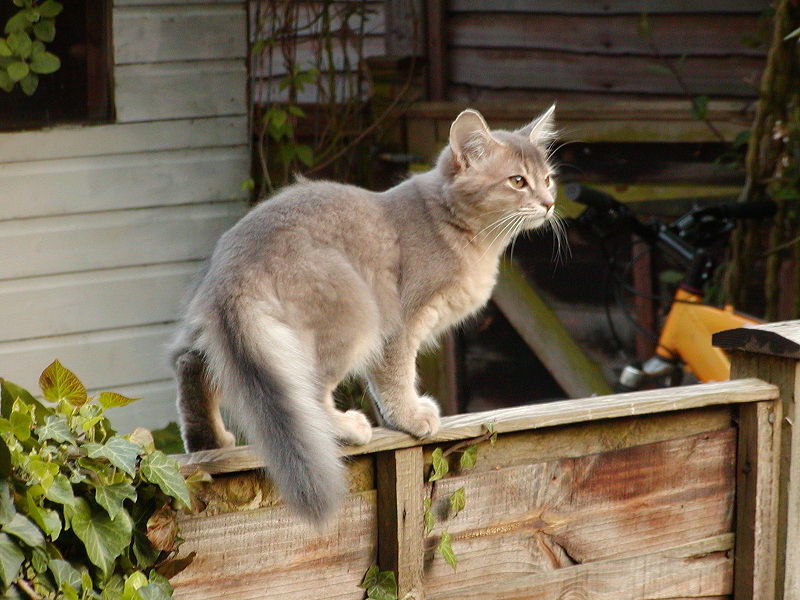
John K Rosembert The Somali cat is often described as a long-haired African cat; a product of a recessive gene in Abyssinian cats, though how the gene was introduced into the Abyssinian gene pool is unknown. It is believed that they originated from Somalia, long lost cousin of the Abyssinian cat; which has origins in Ethiopia. If one judged by appearance, the Somali appears feral, but one look into its eyes and it is clear that this cat has a lot more going on in its head than the average cat. The Somali is so well known for its alertness that the standards for the breed include “alert” in the physical description. The eyes are almond-shaped, and may be green or copper-gold. In size, the Somali is medium to large, muscular and well proportioned, and like its forbearer the Abyssinian, the Somali is elegant yet solidly built. It is a slow developing breed, reaching its full size, maturity, and potential around 18 months. The hair is agouti, or ticked, with anywhere from 4-20 bands of color on each strand. The standard colors for the Somali are red, blue, ruddy, or fawn, but this breed is born in a lot of other colors as well. Silver is one of the colors gaining popularity, for example. The Somali is an active cat who loves to jump and play. In spite of that, she is an easy cat to have in your home. Somalis love people and other animals. Somalis are social cats and like to have some company. This company can be provided by another cat or when people are not at home. The Somali is loving and affectionate and loves to spend time with her parent. While the Somali is a long haired cat, the coat is easy to care for since it is not woolly. A daily brushing as part of play time will keep the Somali’s coat soft and silky. She will reward her groomer with a loving purr. Somalis are active cats and generally will keep their weight under control with compensating exercise. They should have some high perches and cat trees available so they can jump and climb. Some Somalis, like some Abyssinians, can develop a hereditary health issue called pyruvate kinase deficiency that can be a concern, especially if you aren’t cautious about who you buy from. Pyruvate kinase is a key regulatory enzyme in the metabolism of sugar. Cats deficient in PK typically have intermittent anemia. The deficiency can appear in Somalis as young as 6 months and as old as 12 years. The hereditary condition is caused by a recessive gene. A DNA test is available to determine whether a cat is normal, a carrier or affected by PK deficiency. Testing for PK deficiency and breeding away from it will eventually help to eliminate the disease from the breed. Not every PK-deficient cat develops clinical signs, which vary but include lethargy, depression, lack of appetite, and pale gums. The best treatment for PK deficiency is unknown, but it’s still a good idea to have a Somali tested for it. Other problems that may be seen in the breed include a disorder called renal amyloidosis, a neuromuscular condition called myasthenia gravis, and an eye disease called progressive retinal atrophy, which eventually leads to blindness. Source: https://www.hillspet.com/cat-care/cat-breeds/somali http://www.vetstreet.com/cats/somali#health Photo credit: https://en.wikipedia.org/wiki/Somali_cat#/media/File:Blue_Somali_kitten_age_3_months.jpg



